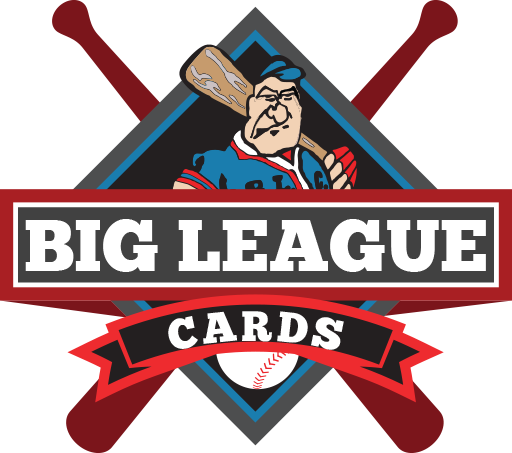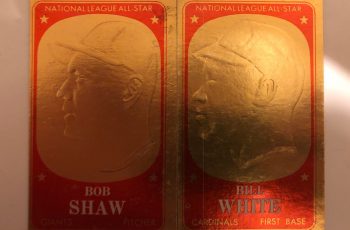Inside the Pack: Mount Rushmore of Sports Card Industry Icons Frontrunners
We are just a few weeks away from the big reveal of the 4 inductees to the Mount Rushmore of Sports Card Industry Icons. We have been receiving nominations from all around the country and are still taking submissions. However, at this time, we are excited to announce the list of leading contenders. May I present to you…the Sweet Sixteen!
Mike Aronstein — Aronstein was among the first card show promoters, but his big claim to fame is as the head of the card companies SSPC and TCMA. With these companies he produced some of the first reprint sets as well as minor league sets, which today still hold value as the first rookie cards of several Hall of Famers.
Dr. Jim Beckett — His last name is synonymous with card value. With a background in statistics, Beckett gathered information from card shops around the country to create one of the first price guides. His company later branches out to become a hobby leader in card grading and autograph authentication.
Sy Berger — A Topps employee for 50 years, Berger had a hand in nearly every Topps set, beginning with the first one he designed in 1952. That set became the template for the modern baseball card, with stats and a biography on the back of the card. Berger was also the player-facing contact for Topps, and was instrumental in signing players to Topps contracts.
Mike Berkus — A longtime collector, Berkus was instrumental in the founding of the National Sports Collectors Convention. To this day, the National is the main gathering place for sports collectors, and the main stage bares his name in remembrance of his contributions.
Jacob Warren Bowman — A bubblegum salesman by trade, Bowman started a company called Gum, Inc. It was with this company that he made his first entry into sports cards, producing the wartime Play Ball sets from 1939 to 1941. After the war, cards returned in 1948 under the name Bowman. Topps bought out Bowman in 1956, but its name was revived in 1989 and continues still today.
Jefferson Burdick — Burdick was the grandfather of collecting, a man whose collection is housed today in the Metropolitan Museum of Art, where he donated his extensive library of cards. Burdick published the American Card Catalog, the first publication to sort card issues and give them designations, such as T206 and E93, which we still use.
Renata Galasso — At one point, Galasso was the largest sports card dealer in the world. She made her name as the first distributor of complete sets — hand-collated, as factory sets were not being distributed until 1974. Later, she issued her own independent sets of cards.
Woody Gelman — Along with Berger, Gelman helped design the iconic 1952 Topps Baseball set. With a background in cartoons and comics, Gelman was the director of the Topps development team in the early 50s and helped produce some of the most attractive set offerings of the era. His obsession with record keeping led to Topps’s archives being kept for more than 30 years, rather than being purged. He was also an editor for the 1960 issue of the American Card Catalog.
David Hall — Hall founded Collector’s Universe, which is the parent company of PSA. With PSA, Hall helped legitimize and mainstream third party card grading, which created another revenue stream in the hobby and increased card values tremendously. PSA also became one of the leading autograph authenticators in the hobby.
Michael Jordan — The popularity of Jordan’s cards from the mid-80s to mid-90s fueled the sports card industry as it brought an influx of investors and collectors alike. Jordan was also one of the first athletes to sign an exclusive autograph deal with a company, a groundbreaking contract that would set the stage for other athletes.
Bob Lemke — Lemke was an early contributor to some of the most important hobby publications, including Sports Collectors Digest and Baseball Card Magazine. He also launched and wrote many editions of The Standard Catalog of Baseball Cards, a thick compendium of almost every set imaginable.
Mickey Mantle — The Commerce Comet’s name is practically synonymous with baseball cards. His 1952 Topps card is undoubtedly the most iconic modern-day baseball card, and the prices for his cards still hold the high water mark for almost every set he appears in. His presence at card shows in the 1980s helped make the gatherings a mainstay of the hobby.
Richard McWilliam — A co-founder of Upper Deck in 1989, McWilliam helped usher in the era of “premium cards” with glossy stock, random pack sequencing, and higher price points. Though not of his own invention, he helped mainstream the use of relic cards in baseball card products.
Pierre Omidyar — Though Omidyar had no direct relation to the sports card industry, he changed the way collectors bought and sold cards forever. As the founder of Ebay, Omidyar somewhat inadvertently created not just a new marketplace for sports cards, but a new price guide as well, one that helps determine the sale prices of cards even when they are not sold online.
Al “Mr. Mint” Rosen — Perhaps the most ubiquitous figure in sports cards throughout its boom in the 1980s and 1990s, Mr. Mint was best known for his big money purchases. The bespectacled and bearded dealer was known for full-page ads showing him holding a fanned-out wad of hundred dollar bills and showed up at card shows with a briefcase full of money and armed guards. His purchase of a 1952 Topps hoard introduced 40 of the most high grade Mickey Mantle rookies to the industry.
Honus Wagner — One of the greatest baseball players of all-time, Honus Wagner’s T206 card has been the most expensive baseball card in the world ever since Jefferson Burdick valued it at $50 in 1933. The card, of which only about 57 are known to exist due to Wagner’s insistence they stop being printed, is the most iconic pre-war baseball card, and has been owned by celebrities like Wayne Gretzky and Charlie Sheen. Examples are currently in the collections of the New York Public Library and the Metropolitan Museum of Art.




